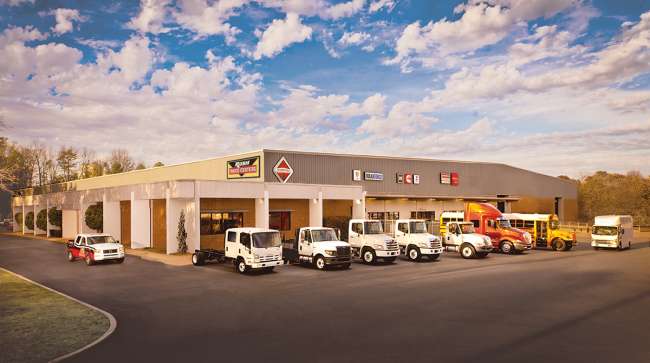Senior Reporter
Rush Reports Q1 Jump in Net Income, Revenue Flat

[Stay on top of transportation news: Get TTNews in your inbox.]
Truck dealership Rush Enterprises Inc. reported first-quarter net income nearly doubled and revenue was essentially flat as the company maintained a strict focus on managing expenses.
Net income for the period ended March 31 was $45.3 million, or 79 cents per diluted share, on revenue of $1.23 billion. That compared with net income of $23 million, 41 cents, on revenue of $1.28 billion a year earlier.
Winter storms throughout Texas and the Southern United States played a role in reducing revenue, according to the San Antonio-based company, which is the largest network of commercial vehicle dealerships in North America with more than 100 dealership locations in 22 states.
“Gradual increases in parts and service activity and healthy demand for new Class 8 trucks and rising used truck values contributed to our strong quarter, along with our continued focus on expense management, which significantly increased our net income when compared to the first quarter of 2020,” Rush Chairman and CEO W.M. “Rusty” Rush said during the company’s quarterly earnings call.

Rush
“We believe our financial results will be strong in 2021 as the economy continues to recover and businesses reopen throughout the country,” he added.
The company sold 2,995 new Class 8 trucks in the first quarter, a decrease of 2.7% compared with a year earlier, and reported its sales accounted for 5.4% of the new U.S. Class 8 truck market.
It sold 2,334 Classes 4-7 commercial vehicles in the quarter, a decrease of 28.5% compared to the first quarter of 2020 — but good for 3.8% of the total U.S. Classes 4-7 commercial vehicle market.
The company sells trucks from Peterbilt Motors Co., a brand of Paccar Inc.; International, a unit of Navistar Inc.; Hino Trucks, a Toyota Group company; Isuzu Commercial Truck of America Inc.; and Ford Motor Co.
At the same time, Rush commented that supply chain constraints are likely to remain a factor in the availability of parts and new trucks over the next few quarters. And not just for semiconductors, the shortage of which has been widely reported. “One day it could be wiring harnesses, another day dash clusters,” he said. “I think it’s just across the board with your Tier 2 and Tier 3 suppliers. [Truck makers] are managing as best they can, but I think they keep getting hit with different issues with different suppliers.”
He added, “From a parts perspective, when you look at our parts inventories, we’ve got more parts back-ordered right now.”

Even at Level 4 autonomy, self-driving trucks will have technical limitations. In this episode, we ask how technology developers are clearing those hurdles to make autonomous trucking a reality. We bring in Boris Sofman, head of engineering for the autonomous trucking program at Waymo. Hear a snippet above, and get the full program by going to RoadSigns.TTNews.com.
Aftermarket products and services accounted for approximately 63% of the company’s total gross profit in Q1 2021. Parts, service and body shop revenues were $415.7 million, which was down 2.9% compared with $428 million a year earlier. But the company is seeing pockets of strength for parts sales in the refuse, construction and public sector customers.
The company’s absorption ratio in the quarter was 122.6%. Rush calculates absorption ratio by dividing the gross profit from the parts, service and body shop departments by the overhead expenses of all of a dealership’s departments, except for the selling expenses of the new and used commercial vehicle departments and carrying costs of new and used commercial vehicle inventory.
Rush Truck Leasing operates 45 PacLease and Idealease franchises in markets across the country, with more than 8,500 trucks in its lease and rental fleet and more than 1,000 trucks under contract maintenance agreements. Lease and rental revenue declined 4.2% in the quarter compared with the first quarter of 2020, but the company said it weathered the downturn.
“Due to efficient management of the fleet and increased rental fleet utilization, our lease and rental gross profit increased 18.6% over the same time period,” the company reported in its earnings release.
Want more news? Listen to today's daily briefing below or go here for more info:

